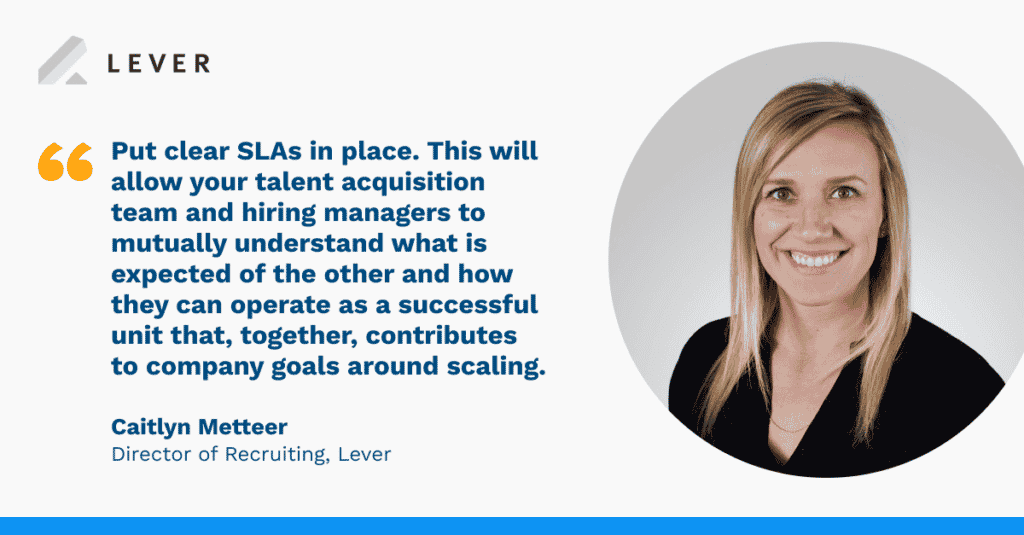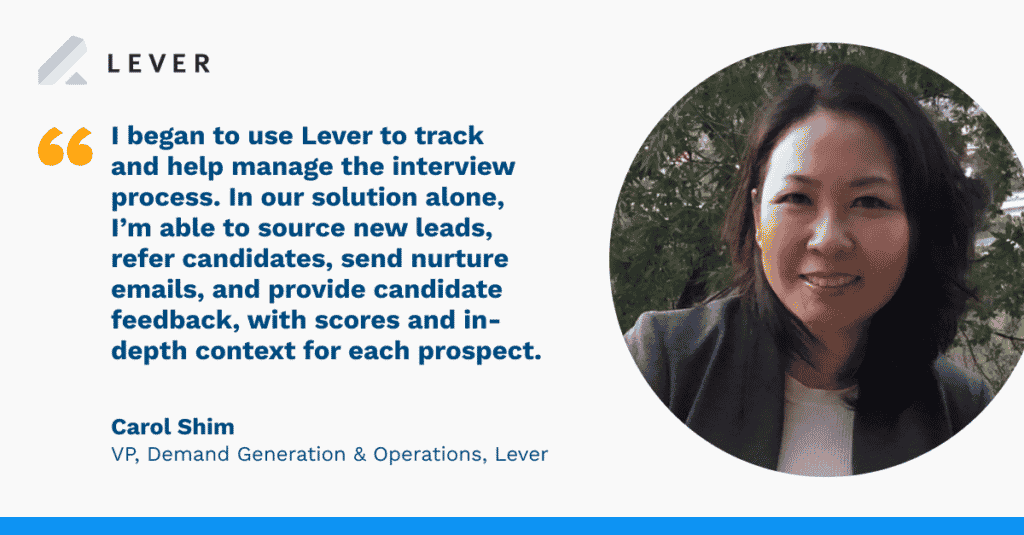Hiring manager collaboration — or lack thereof — with writing job descriptions, finding top talent, engaging qualified candidates, and making decisions about who to advance in the recruitment process is often the difference between hiring the right people versus letting premier prospects slip through the cracks (or not finding them at all).
Unfortunately, a hiring manager who needs a new employee to fill a critical role on their team is also likely one of the busiest people at your company.
Not only do they likely have other employees to manage, but they also have their own workload (e.g., streamlining their end of the hiring process) and the org has recognized that they need more help. (e.g., getting a requisition budget.)
By the time a position is approved and hits a recruiter’s desk, the hiring manager has likely needed the open position filled for a while. Thus, it’s no surprise they impart a sense of urgency to the rest of the hiring team to find the right individual to send a job offer.
In short, hiring managers need talent acquisition and human resources teams (along with other key hiring decision-makers) to help make their lives as easy as possible. When they do just that, it’s in everyone’s best interests.
So, ask yourself: Do you and others responsible for hiring at your business help or hinder your hiring managers’ work? Whatever the answer is, juts know you can always do more to enhance the hiring manager experience.

How to enhance the hiring manager experience
At some employers today, it’s “hiring managers vs. recruiters,” with the two hiring stakeholders sometimes (or often) butting heads over how to effectively find, engage, and convert job seekers into new employees.
The reality is it should be “hiring managers and recruiters.”
Both parties must work closely with another to interview and hire high-quality candidates and collaborate in a seamless manager — coordination that leads to smarter hiring decisions and a less stressful work environment.
Here’s how we’ve seen recruiters and hiring managers align better to raise the talent bar, speed up the interview process, and ensure a high-quality HM experience.
Making better hires through hiring manager alignment
- Become an expert: Become knowledgeable of the day-to-day activities and the purpose of the roles, teams and departments that you support. This is especially important given the need for context for the recruiter-hiring manager kickoff meeting.
- Gather context: Speak with at least one other member of the team, ideally an individual contributor in a similar position or one who would work closely with the new hire. What is their perception of what’s critical to the role?
- Dig deep: Conduct in-depth candidate screens (that count), by adding more rigor and scrutiny to your candidate conversations. Include 4-5 interview questions that the hiring manager usually asks. Get these during the kick-off meeting.
- Articulate: Effectively communicate the strengths and weaknesses of each candidate you speak with, tying them back to the critical competencies discussed with the hiring manager.

Making faster hires through hiring manager alignment
- Minimize surprises: Get the critical info upfront so there are no unexpected deal-breakers from the candidate down the road related to salary, work authorization, commute, timing, et cetera.
- Find interviewer alignment: Anyone involved with the interview process needs to have a clear understanding of the role and what the hiring manager needs. If there’s a disconnect among the interview panel, building consensus to determine the finalist is nearly impossible.
- Block off interview time: Depending on the urgency of the hire, reserve time on a hiring manager or team member’s calendar in advance for quick scheduling. Candidates can often make time early morning, around lunch, and at the end of the day.
- Create fast feedback loops: Ensure open lines of communication, and don’t be afraid to ask a hiring manager if what they’re looking for has changed. This is especially important with junior hiring managers, who may not actually know what they’re looking for in the first place.
- Eliminate repetition: If you haven’t broken down what each interviewer is looking for and the questions they are asking, there is likely a ton of overlap. Candidates will likely get the same high-level questions, which is a waste of time and doesn’t look good from a candidate’s perspective.
- Streamline on-site interviews: A lot of work goes into getting candidates on-site. Ensure the interview team is well prepared and they know the order and location of the interview room. Make sure whoever goes last knows to walk the candidate out, or let you know when they’re finished.
- Address final concerns: At the offer phase, you should already have a very good idea of the package that an applicant will accept. Back-and-forth at this stage goes downhill fast. Address legitimate concerns from the candidate in a timely manner, and ensure there are no surprises at this stage about offers, desired salary, relocation, work authorization, and the like.
Using the right processes and technology to work more cohesively with hiring managers
These area just some of the ways to build trust and credibility and to ensure hiring managers will give you a glowing recommendation for your recruiting work.
Identifying and hiring top talent is tough. It’s a competitive “people sport.” To be successful recruiters, we must ultimately take ownership of the variables we can control.
By avoiding common missteps, recognizing the complex nature of “human capital,” and leveraging better processes and tech, we can ensure a first-class hiring manager experience and better contribute to business growth.
Watch our on-demand headcount planning webinar to learn how talent leaders, recruiters, hiring mangers, and HR can work together to meet their C-suite’s hiring goals.



